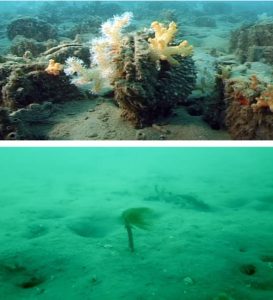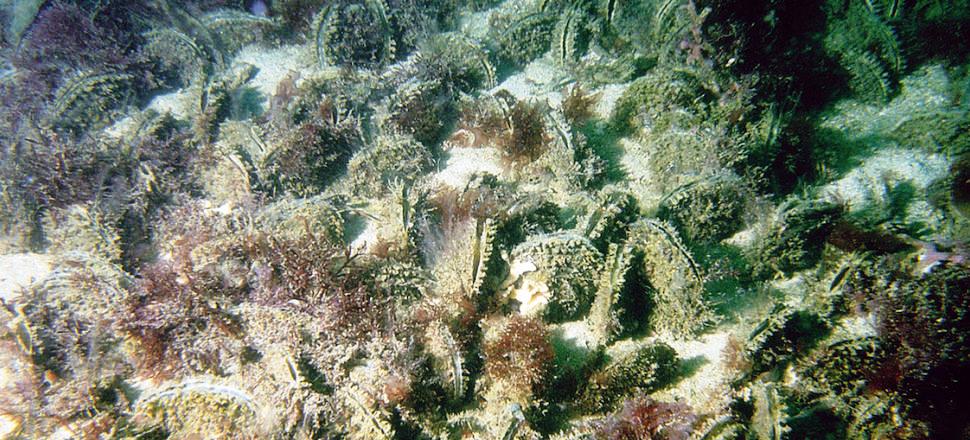In New Zealand—as in most coastal areas around the world—shellfish beds are the most impacted and endangered marine habitats.
But these ecosystems are vital. They provide many tangible and deep benefits that support our life, wellbeing and culture.
They clean our waters, stabilise the seafloor, feed fish and birds, dampen the effects of storm surge, enhance biodiversity, and remove nutrients that run off the land.

Seabed degradation in horse mussel beds in Mahurangi Harbour, north of Auckland. Photos (by Simon Thrush) were taken in the same place 18 years apart. This destruction shows no sign of natural recovery.
So how do we generate a tipping point that changes the current trend of decline and loss into a trajectory of recovery and abundance?
In recent years community groups and local and central government have, for example, mobilised to restore the integrity of stream margins in farming areas and create predator-free environments for indigenous flora and fauna.
I believe that, as a matter of urgent priority, a similar programme is needed for the marine environment, supported by local and central government. Currently, there is no coordinated partnership activity for coastline restoration.
However, concerned at the poor state of shellfish beds, several pioneering iwi and community groups have made a start in their local areas.
We need innovative research to inform targeted restoration actions and streamline policies. Research should include gathering baseline data that will inform an in-depth understanding of the current state of our unique indigenous coastal biodiversity, including shellfish ecology.
Knowledge of the factors causing the rapid decline of our marine ecosystem will enable politicians, nationally and internationally, to target policy and support the implementation of practical responses to greatest effect around our coasts.
Featured photo (by Simon Thrush) shows a healthy underwater scene from 1995: a dense bed of horse mussels off the Coromandel coast with seaweeds, fan worms, sponges and soft corals living on the shells. The bed has now been destroyed.

